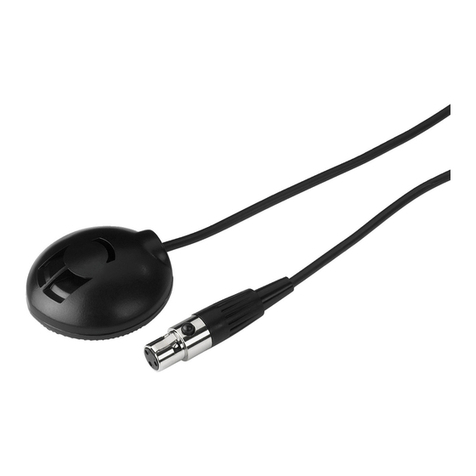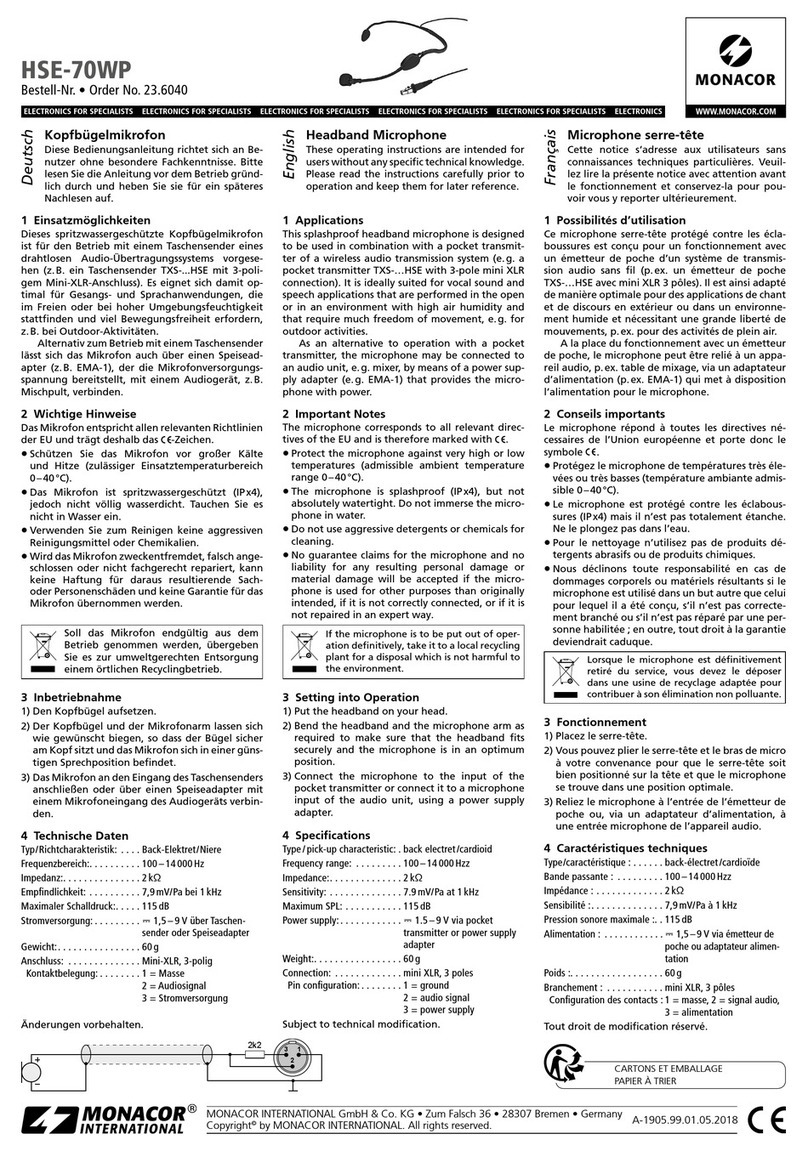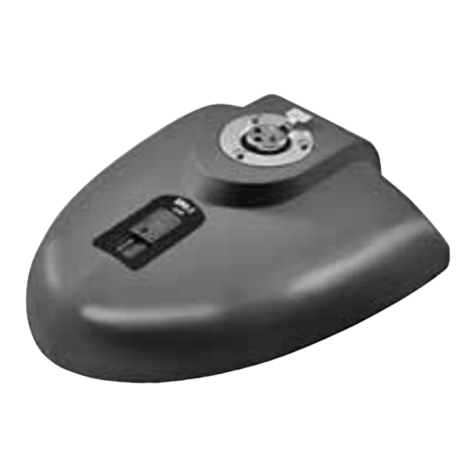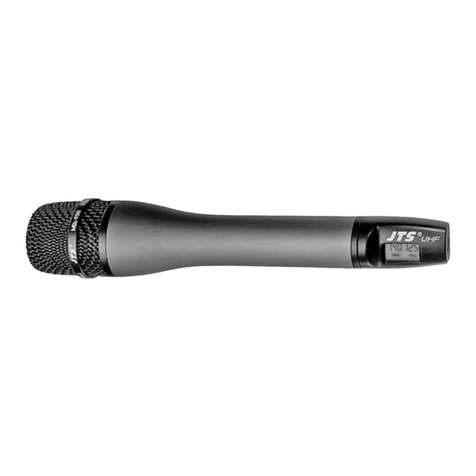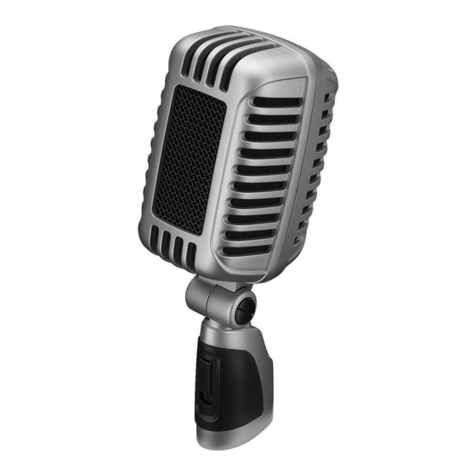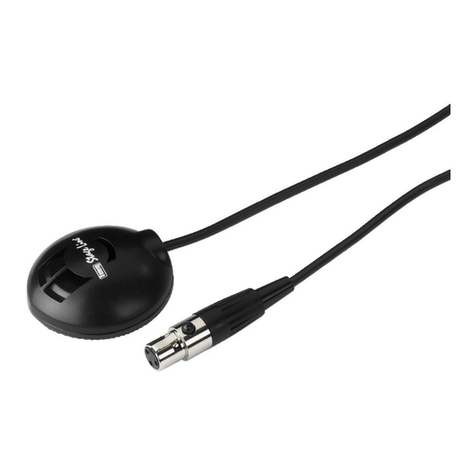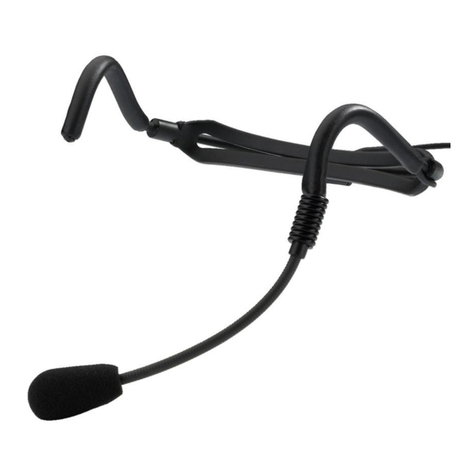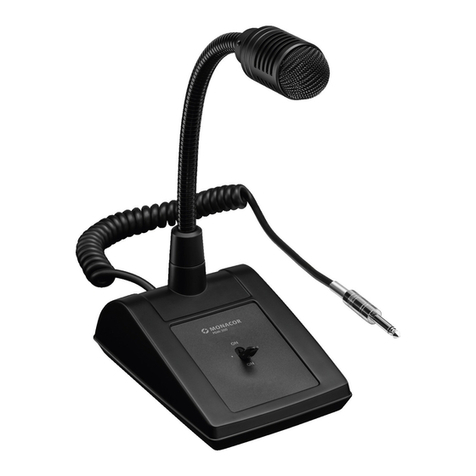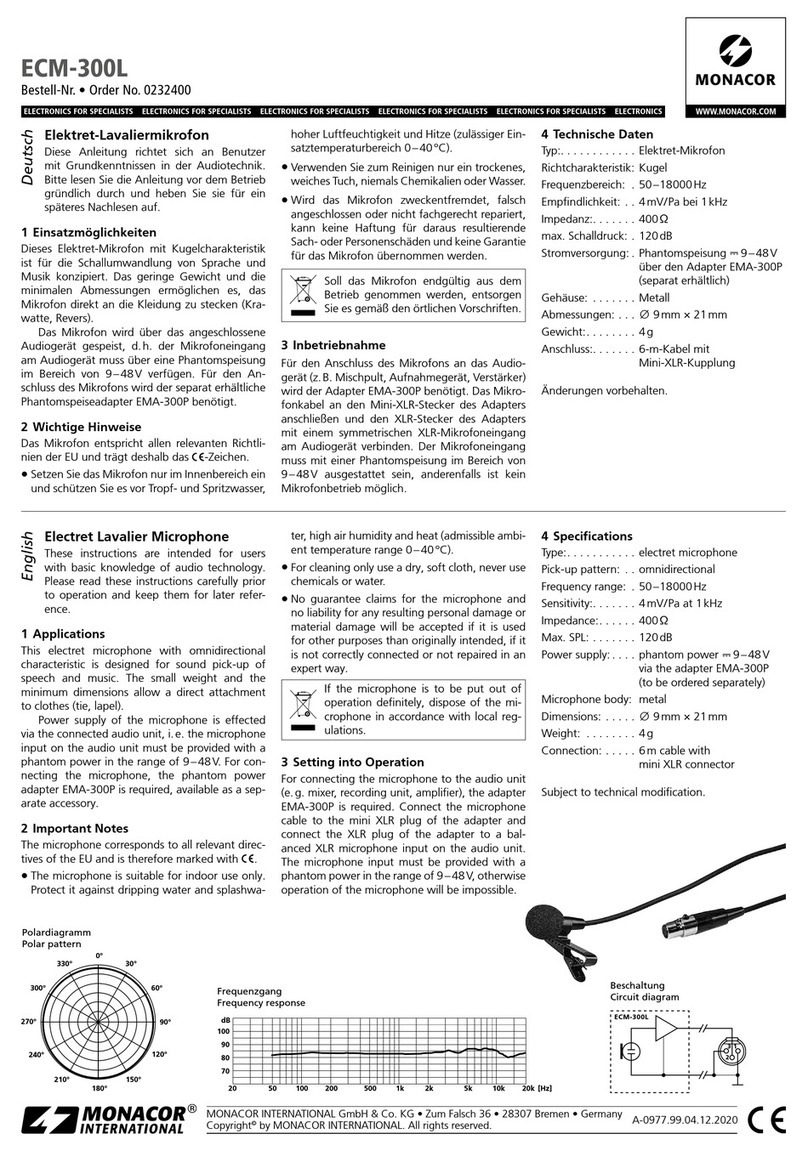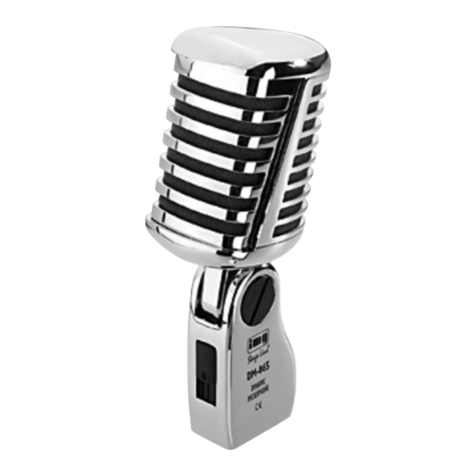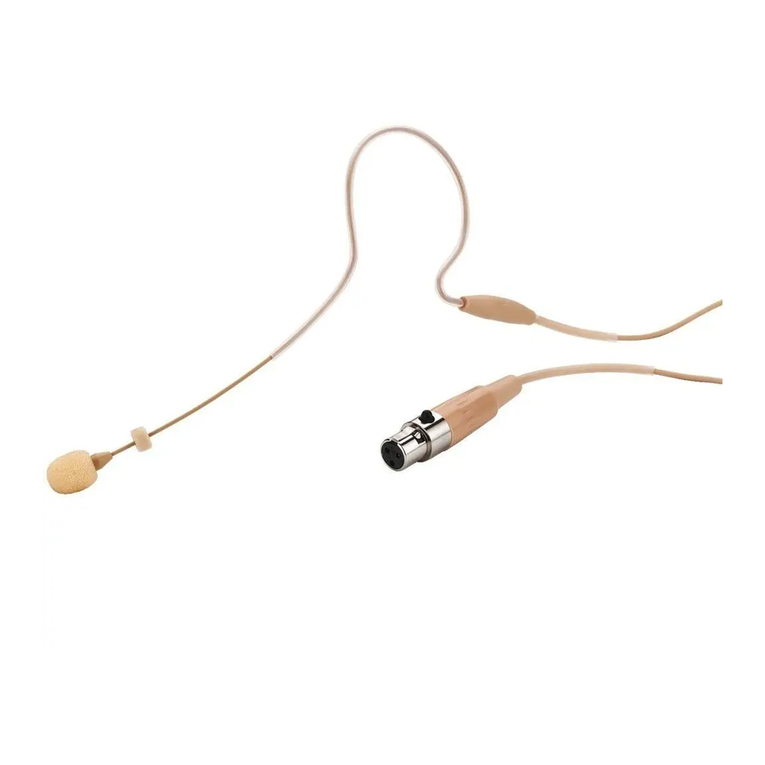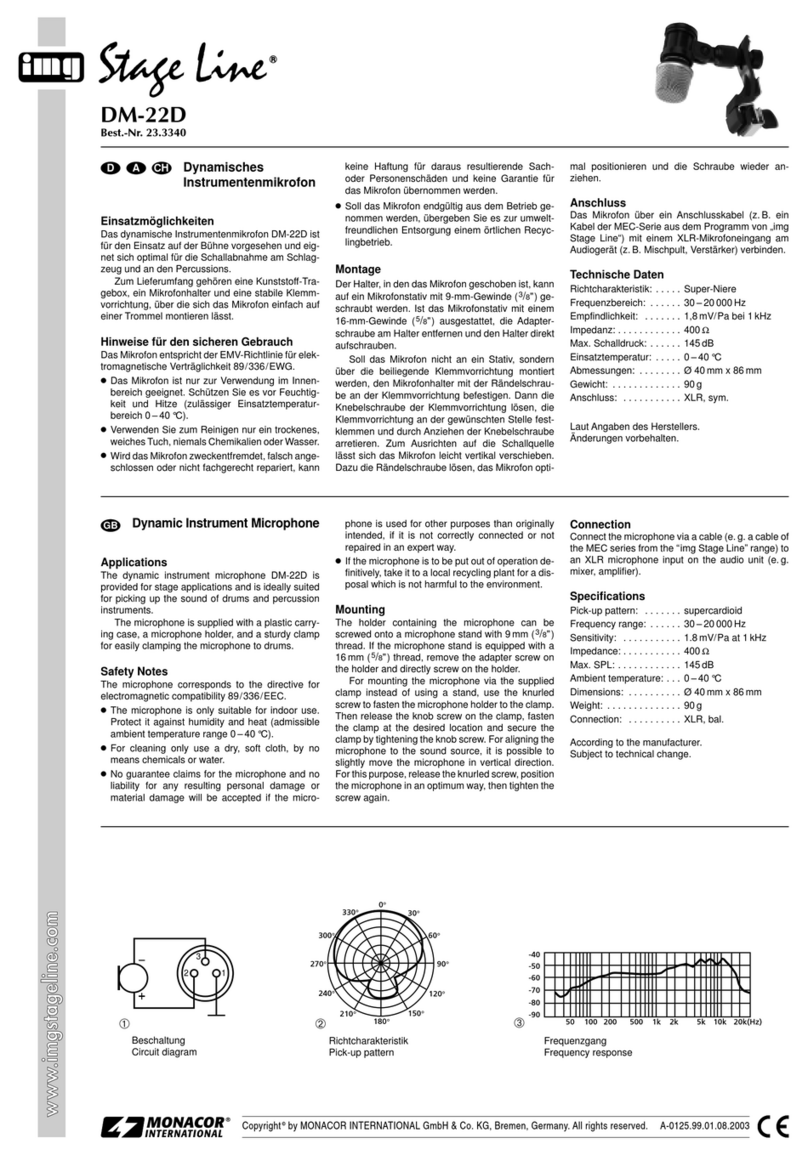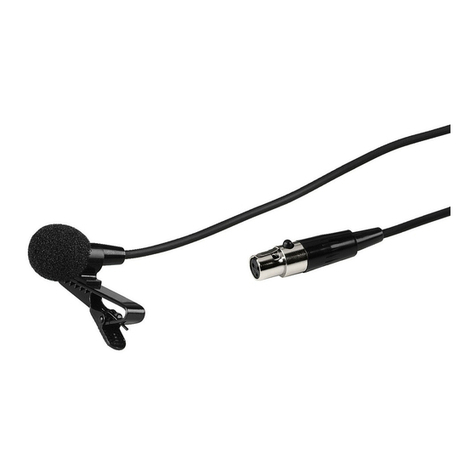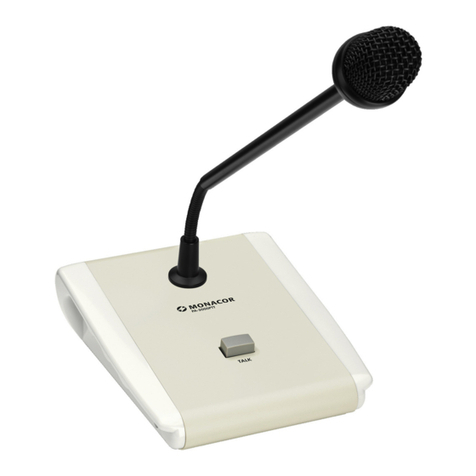DM -800
Bestellnummer 23.6320
Microphone dynamique
Veuillez lire la présente notice avec attention
avant le fonctionnement et conservez-la pour
pouvoir vous y reporter ultérieurement.
1 Possibilités dʼutilisation
Le microphone dynamique DM-800, cardioïde,
est adapté pour une utilisation universelle. Il est
livré avec un support micro et un cordon de
branchement de 3 m.
2 Conseils importants dʼutilisation
Le microphone répond à toutes les directives
nécessaires de lʼUnion européenne et porte
donc le symbole .
GLe microphone nʼest conçu que pour une utili-
sation en intérieur. Protégez-le de tout type de
projections d'eau, des éclaboussures, d'une
humidité élevée de l'air et de la chaleur (plage
de température de fonctionnement autorisée :
0 – 40 °C).
GPour le nettoyage, utilisez uniquement un
chiffon sec et doux, en aucun cas de produits
chimiques ou d'eau.
GNous déclinons toute responsabilité en cas de
dommages matériels ou corporels résultants
si le microphone est utilisé dans un but autre
que celui pour lequel il a été conçu, s'il n'est
pas correctement branché ou s'il n'est pas
réparé par une personne habilitée ; en outre,
la garantie deviendrait caduque.
3 Fonctionnement
1) Vissez le support micro sur un pied micro
doté dʼun filetage 15,9 mm (5⁄8″) et placez le
microphone dans le support.
2) Reliez le microphone à lʼentrée micro dʼun
appareil audio (par exemple table de mixage,
enregistreur, amplificateur) via le cordon de
branchement. Le microphone et le cordon de
branchement sont symétriques, la fiche jack
6,35 est asymétrique (voir schéma 1). Si le
microphone doit fonctionner sur une entrée
symétrique, utilisez un cordon symétrique
avec fiches XLR (par exemple de la série
MEC de “img Stage Line”).
3) Pour allumer le microphone, poussez lʼinter-
rupteur vers le haut.
Lorsque le microphone est définitivement
retiré du service, vous devez le déposer
dans une usine de recyclage adaptée pour
contribuer à son élimination non polluante.
4) Pour éviter tout effet de larsen, assurez-vous
que le microphone nʼest pas tenu trop près
dʼune enceinte, nʼest pas dirigé vers elle et que
le volume nʼest pas réglé trop fort. Si besoin,
diminuez le volume pour le microphone sur
lʼamplificateur ou la table de mixage.
4 Caractéristiques techniques
Type transducteur : . . dynamique
Directivité : . . . . . . . . . cardioïde
Bande passante : . . . . 80 – 12 000 Hz
Pression sonore max. : 125 dB
Sensibilité : . . . . . . . . . 2,5 mV/Pa à 1 kHz
Impédance : . . . . . . . . 600 Ω
Corps : . . . . . . . . . . . . plastique
Branchement : . . . . . . XLR, symétrique
Configuration
contacts : . . . . . . . . 1 = blindage
2 = signal +
3 = signal
-
Cordon
branchement : . . . . cordon 3 m avec fiches
jack 6,35, 2 pôles
Dimensions : . . . . . . . ∅56 mm × 170 mm
Poids : . . . . . . . . . . . . 350 g
Tout droit de modification réservé.
Microfono dinamico
Vi preghiamo di leggere attentamente le pre-
senti istruzioni prima della messa in funzione e
di conservarle per un uso futuro.
1 Possibilità dʼimpiego
Il microfono dinamico DM-800 con caratteristica
a cardioide è adatto per impieghi universali.
Sono in dotazione un porta microfono e un cavo
di collegamento di 3 m.
2 Avvertenze importanti per lʼuso
Il microfono è conforme a tutte le direttive rile-
vanti dellʼUE e pertanto porta la sigla .
GUsare il microfono solo allʼinterno e proteggerlo
dallʼacqua gocciolante e dagli spruzzi dʼacqua,
da alta umidità dellʼaria e dal calore (tempera-
tura dʼimpiego ammessa fra 0 e 40 °C).
GPer la pulizia usare solo un panno morbido,
asciutto; non impiegare in nessun caso acqua
o prodotti chimici.
GNel caso dʼuso improprio, di collegamento
sbagliato o di riparazione non a regola dʼarte
del microfono, non si assume nessuna re-
sponsabilità per eventuali danni consequen-
ziali a persone o a cose e non si assume nes-
suna garanzia per lʼapparecchio.
3 Messa in funzione
1) Avvitare il porta microfono su uno stativo per
microfono con filettatura 15,9 mm (5⁄8″) e inse-
rire il microfono nel suo supporto.
2) Collegare il microfono con lʼingresso di un
apparecchio audio (p. es. mixer, registratore,
amplificatore) usando il cavo in dotazione. Il
microfono e il cavo di collegamento sono con
contatti bilanciati, il jack tuttavia è sbilanciato
(vedi fig. 1). Se il microfono deve essere
usato con un ingresso bilanciato, occorre
usare un cavo bilanciato con contatti XLR
(p. es. della serie MEC di “img Stage Line“).
3) Per accendere il microfono spostare in alto
lʼinterruttore.
4) Per evitare il fischio del feedback fare atten-
zione che il microfono non si trovi troppo
vicino allʼaltoparlante, che non sia orientato
Se si desidera eliminare lʼapparecchio
definitivamente, consegnarlo per lo
smaltimento a unʼistituzione locale per
il riciclaggio.
verso lʼaltoparlante e che il volume non sia
troppo alto. Se necessario, sullʼamplificatore
o sul mixer ridurre il volume per il microfono.
4 Dati tecnici
Tipo di trasduttore: . . . dinamico
Caratteristica: . . . . . . . cardioide
Gamma di frequenze: . 80 – 12 000 Hz
Pressione
sonora max.: . . . . . . . 125 dB
Sensibilità: . . . . . . . . . 2,5 mV/Pa con 1 kHz
Impedenza: . . . . . . . . 600 Ω
Corpo: . . . . . . . . . . . . plastica
Contatti: . . . . . . . . . . . XLR, bilanciati
Piedinatura: . . . . . . 1 = schermo
2 = segnale +
3 = segnale
-
Cavo di
collegamento: . . . . . 3 m con jack 6,3 mm
a 2 poli
Dimensioni: . . . . . . . . ∅56 mm × 170 mm
Peso: . . . . . . . . . . . . . 350 g
Con riserva di modifiche tecniche.
®
MONACOR INTERNATIONAL GmbH & Co. KG
•
Zum Falsch 36
•
28307 Bremen
•
Germany
Copyright
©
by MONACOR INTERNATIONAL. All rights reserved. A-1482.99.01.12.2013
Schéma électrique • Schema elettrico Réponse en fréquence • Risposta in frequenza


